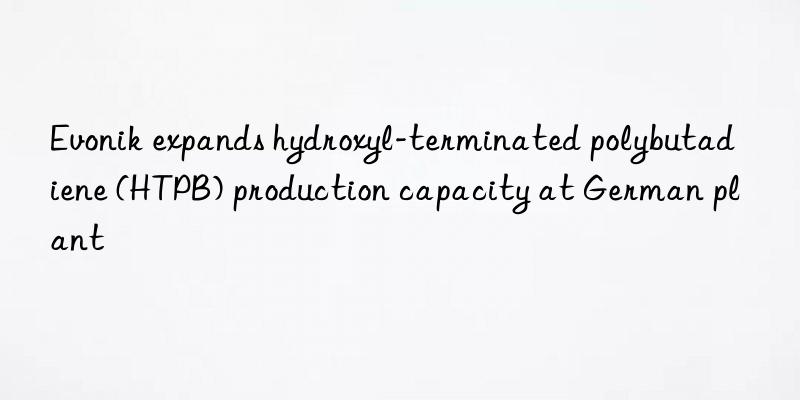
Recently, Evonik has decided to invest in its Polyvest plant in Marl, Germany. The HT plant was expanded to expand the coatings and coating adhesive resin business lines. The multi-million-euro investment is expected to increase its production capacity for hydroxyl-terminated polybutadiene (HTPB), which will be sold under the Polyvest brand.
Stefan, Business Line Director Dr. Pfaffenbach said: "This expansion is part of our ongoing efforts to provide more reliable services to our customers around the world. In a highly competitive market, we are strengthening our position as a cost and innovation leader."
The expansion comes ten years after production started at the HTPB plant in Marl. Jürgen, Head of Product Line Polybutadiene and Specialty Acrylates Dr Herwig said: “We understand that dual-use products such as polybutadiene require a high degree of sensitivity and expertise when dealing with customers and authorities. Therefore, we can rely on the expertise of our colleagues when marketing this highly specialized product. experience and expertise to build additional capabilities.”
Production is backward integrated, with butadiene produced directly at the Marl plant in Germany, while the hydrogen peroxide is supplied by Evonik.
Polyvest HT is a liquid hydroxyl-terminated polybutadiene produced by free radical polymerization. The polymer has a highly hydrophobic polybutadiene backbone and primary hydroxyl groups that allow precise chemical modification.
Hydroxy-terminated polybutadiene
Hydroxyl-terminated polybutadiene, abbreviated as hydroxyl-butadiene rubber, abbreviated as HTPB, is a liquid prepolymer developed in the 1960s, which is obtained by dissolving butadiene and hydrogen peroxide as raw materials through the free radical method. It is liquid rubber. The hydroxyl-terminated polybutadiene cured product has excellent mechanical properties, especially hydrolysis resistance, acid and alkali resistance, wear resistance, low temperature resistance and excellent electrical insulation. HTPB is a colorless or light yellow transparent liquid at room temperature.
The reaction of HTPB with chain extender and polyisocyanate cross-linking agent at room temperature or high temperature can produce a cured product with a three-dimensional network structure. The polybutadiene main chain makes the polymer have properties similar to polymers such as natural rubber and butyl rubber, and is highly hydrophobic. The cured product has excellent mechanical properties, good transparency, and especially excellent hydrolysis resistance and electrostatic properties. Insulation, acid and alkali resistance, excellent low-temperature flexibility, aging resistance, good adhesion to non-polar and low-polarity materials, excellent air tightness, and very low moisture vapor transmission rate.
For a long time, HTPB has been generally used to make adhesives for solid propellants, etc. In recent years, it has been gradually promoted for the production of civilian cast polyurethane elastomers, RIM polyurethane products and CASE polyurethane elastic materials. The main downstream application areas include rubber products for automobile and aircraft tire structures, building materials, shoemaking materials, special foam plastics, coatings, adhesives, potting materials, electrical insulation packaging materials, waterproof and anti-corrosion materials, underwater sealing materials, Sports track, wear-resistant conveyor belt, as well as modification of other rubber and epoxy resin modification and other uses. Liquid rubber has been around for a short time. At the same time, due to its poor strength and flexural resistance, the tires produced are prone to internal heat during high-speed driving. Further breakthroughs are still needed. However, due to the excellent electrical properties, water resistance, corrosion resistance and dimensional stability of HTPB, the casting method can be used to produce insulation materials with complex shapes.
At present, the main HTPB research institutions and manufacturing companies include Liming Chemical Research and Design Institute Co., Ltd., Shandong Zibo Qilong Chemical Co., Ltd., PetroChina Lanzhou Chemical Research Center, American Sartomer Company, French Cray Valley Company, etc.



 微信扫一扫打赏
微信扫一扫打赏
